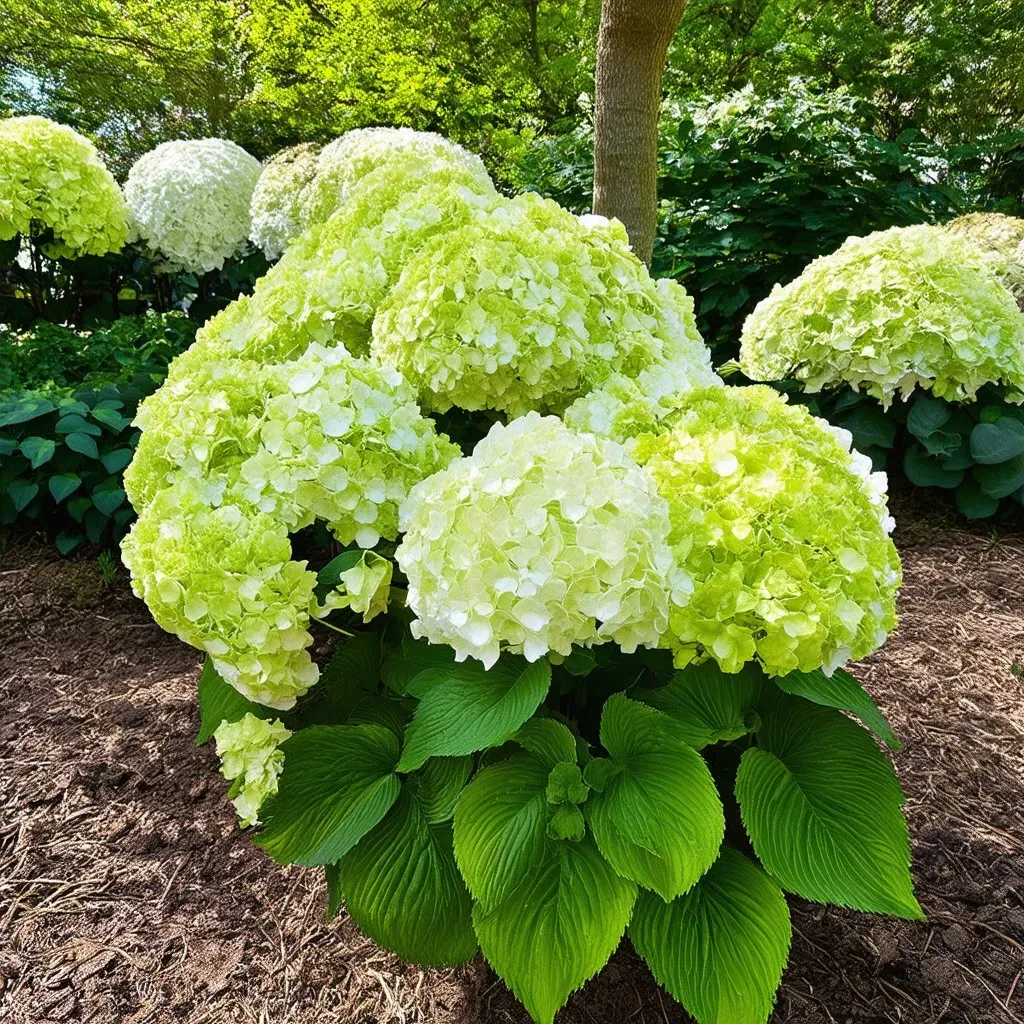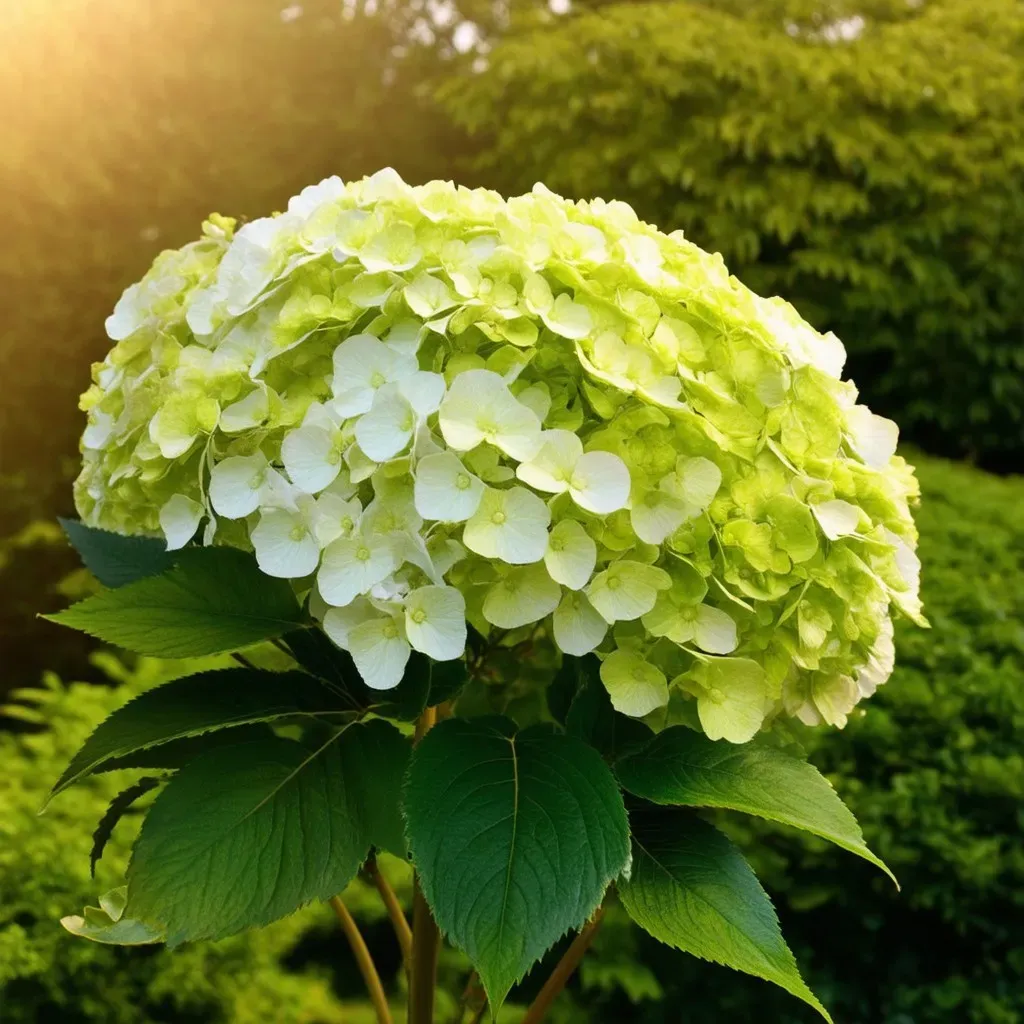Picture of limelight hydrangea captures the essence of one of the most visually stunning plants in the garden. Known for their unique flower spikes and vibrant color transitions, Limelight hydrangeas (Hydrangea paniculata ‘Limelight’) are a favorite among gardeners and landscape designers alike. Their massive, lime-green blooms in summer gracefully transition to shades of pink, red, and burgundy in fall, providing an enchanting display that persists long into the cooler months.
Characteristics of Limelight Hydrangea
Limelight hydrangeas are deciduous shrubs that are not only beautiful but also incredibly versatile. They can serve as dramatic focal points in your garden or a lush backdrop to complement Other flower varieties. Here are some essential characteristics:
- Height: Limelight hydrangeas usually reach heights of about 6-8 feet, making them ideal for combination planting.
- Bloom Size: The flowers can grow up to 12 inches long, creating a show-stopping presence.
- Growth Habit: These hydrangeas have a robust and upright growth habit, which adds a statuesque element to any garden.
- Flowers: Starting a pale green, the flowers encapsulate an array of colors as they mature, blooming in soft whites, creamy tones, and transitioning to shades of pink and burgundy.
| Feature | Detail |
|---|---|
| Scientific Name | Hydrangea paniculata ‘Limelight’ |
| Blooming Period | Summer to Winter |
| Sun Requirement | Full sun to partial shade |
| Soil Preference | Well-drained, slightly acidic |
| Hardiness Zone | USDA Zones 3-9 |
How to Grow Limelight Hydrangeas
To cultivate stunning Limelight hydrangeas in your garden, follow these steps:
1. Choosing the Right Location
Select a sunny spot, preferably with some afternoon shade, to protect the plant from extreme heat. Limelight hydrangeas thrive in full sunlight, requiring at least 6 hours of sun exposure daily to ensure optimal blooming.
2. Soil Preparation
Prepare rich, well-drained soil. While Limelight hydrangeas can tolerate various soil types, a slightly acidic to neutral pH (between 6.1-7.0) is ideal.
3. Planting
- Dig a hole twice the width of the root ball and as deep as the ball itself.
- Place the plant in the hole so that the top of the ball is level with the surrounding soil.
- Backfill with soil and water thoroughly to remove air pockets.

4. Watering and Fertilizing
Regular watering is crucial, especially during hot, dry spells. Aim to keep the soil moist but not soggy. Fertilize with a balanced fertilizer during early spring and mid-summer to encourage healthy growth and flowering.
5. Pruning
Pruning should be done in late winter or early spring. Remove any dead or diseased branches and cut back a third of the plant’s size, which promotes new growth and larger blooms.
Limelight Hydrangea Maintenance Tips
Proper maintenance is crucial for the longevity and vitality of Limelight hydrangeas:
- Mulching: Apply a layer of organic mulch, such as bark or straw, to help retain moisture and suppress weeds.
- Pest Control: While these plants are generally pest-resistant, they can still be affected by aphids, scale, and slugs. Regular inspections can help manage any infestations.
- Winter Protection: In colder climates, cover the base of the plant with mulch or leaves to protect it during winter.
Common Uses for Limelight Hydrangeas
Limelight hydrangeas are incredibly versatile and can be employed in various landscaping scenarios:
- Borders and Hedges: Their upright form makes them perfect for creating privacy screens or accenting garden edges.
- Mixed Planting: Combine these hydrangeas with perennials and annuals to create visually captivating displays throughout the year.
- Cut Flowers: The large blooms make stunning cut flowers for arrangements, maintaining their appearance for an extended period.
Stunning Visuals: Limelight Hydrangea Images
To truly appreciate the beauty of Limelight hydrangeas, you can find a plethora of limelight hydrangea images. Their breathtaking colors and shapes will inspire any gardener to include these beauty queens in their landscape.

Frequently Asked Questions (FAQ)
1. What is the best time to prune Limelight hydrangeas?
Answer: It is best to prune Limelight hydrangeas in late winter or early spring before new growth begins.
2. How often should I water my Limelight hydrangea?
Answer: Typically, Limelight hydrangeas need regular watering, especially in the summer months. Aim for approximately 1 inch of water per week.
3. Can Limelight hydrangeas grow in pots?
Answer: Yes, Limelight hydrangeas can be grown in pots, but ensure that the container has proper drainage. Choose a heavy planter to prevent toppling as the shrub grows.
4. What should I do if my Limelight hydrangea isn’t blooming?
Answer: If your hydrangea isn’t blooming, it could be due to insufficient sunlight, improper pruning, or lack of nutrients. Adjusting these factors can improve blooming.
5. Are Limelight hydrangeas deer-resistant?
Answer: Yes, Limelight hydrangeas are known to be deer-resistant, making them an excellent choice for landscapes that may attract wildlife.
With their incredible floral display and ease of care, Limelight hydrangeas are the perfect addition to any garden space. They offer resilience, versatility, and, most importantly, beauty. So why not add a lush display of limelight hydrangea photos to capture the extensive charm of these splendid plants?


